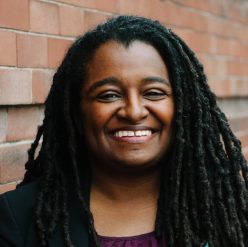The reason we have the goal of 15% of housing in transit areas being affordable to families at 60% AMI is not just because Durham needs more affordable housing in the city as a whole. It’s because these areas are the MOST critical areas to ensure that we retain affordability. We want affordable housing specifically in transit areas because;
1) low-income people are less likely to own vehicles and need access to transit to get to jobs and amenities;
2) it’s a way to make sure we are growing by inclusion, making sure that we are creating mixed-income communities in these areas that are going to be (already are) highly desirable for private developers and therefore, without our intervention and given the motivations of for-profit companies, very likely to become some of the most expensive areas of town;
3) we want to prevent the light rail line from becoming a vehicle for displacement of low-income people from their homes, like another transportation project in Durham did, specifically the construction of 147 and the destruction of the Hayti neighborhood.
If we don’t provide the structural environment, meaning tools and incentives for developers, to make sure this happens, it just won’t happen. The market has no problem providing density, because denser development is more profitable anyway, but the market rarely creates affordable housing on its own, and it’s not going to get us anywhere near 15%. The offers we’re seeing from developers have all been less than 2% affordable, and while we appreciate those efforts, it’s not enough to get us to our goal.
Our affordable housing consultant and concerned community members have suggested that the reason our density bonus, which is one of the few ways we can legally incentivize affordable housing given our state regulations, doesn’t work, is that we set base density too high. There are few situations in which a developer might ask for a density bonus because they can already build as densely as they want. In order to get 15% affordability in these areas, we need to set our base density lower, and require developers to provide affordable housing or other public goods to get the density they want.
If we approve re-zoning to higher density before we have these tools in place, we’re just giving it away instead of using it to leverage to kind of development we want – not just dense, but mixed-income, inclusive, accessible development in these critical areas of the city. If we don’t get this right now, we’re not going to be able to go back and do it over. Without a comprehensive effort on the part of the city, we will end up with the same sort of development we have on 9th street and downtown – dense, but inaccessible to most Durham families and especially to the families who most need access to this transit line. I think we need to wait until we can plan each of these station areas as a whole, lay out exactly what we want, set up the programs and incentives that we need to get it, and involve the community in the process, before we rezone transit areas.
It’s very important to me that our concerns about equity don’t take a back seat to our desire to see dense development happen in these transit areas. Equity and inclusiveness isn’t something we can deal with later, after we have everything else figured out. We have to think about it now, and incorporate the desire for equity into all the plans for how our city develops, particularly around these transit stops. We need to think about building an inclusive neighborhood first, not last, and we need to make informed decisions in line with that value. The light rail is 10 years out, so we can take the time we need, and also, we’re the people who control at least one aspect of how long things take by assigning resources to the department’s that need to make that happen. If we want this to go faster, we can assign more resources to the planning department or hire a consultant to help. It’s more important to me that we do this right than that we do it quickly.
